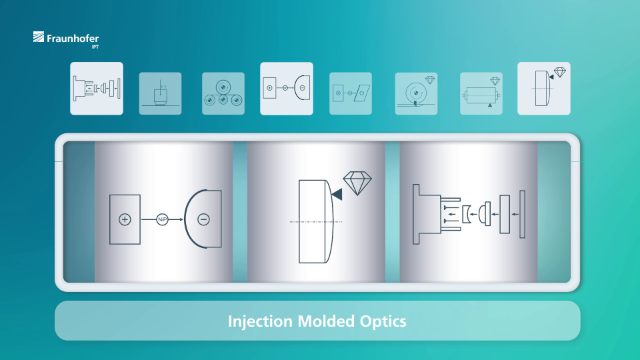Micro- and nanostructures are used in numerous products: from classic consumer products such as smartphones or monitors, to lighting components in automobiles or for interior design, to medical applications in which, for example, the aim is to promote, diagnose or prevent targeted cell growth.
Fraunhofer IPT researches and develops technologies for the manufacture and processing of precision components and has been working on mastering and replication processes for the efficient production of micro- and nanostructures since the 1980s.
Targeted functionalization opens up new applications in medicine, biotechnology and optics
Micro- and nanostructured surfaces, provided with targeted functionalization, can improve efficiency and resource consumption in a wide range of applications. Further developments in materials research and production technology also support numerous new fields of application for micro- and nanostructured surfaces, for example in medicine, biotechnology or for optical components.
Manufacturing miniaturized structures of small and large surfaces requires a large amount of know-how in different disciplines of production engineering and highly complex manufacturing processes. Structures from a few micrometers to a nanometer range can be produced and multiplied in stable replication processes.
Latest technology and process combinations for the automated fabrication of micro- and nanostructures
To this end, Fraunhofer IPT uses the latest machine and software technology to further develop all tasks along various process chains – from tool design to the design and simulation of manufacturing processes to the production of prototypes.

